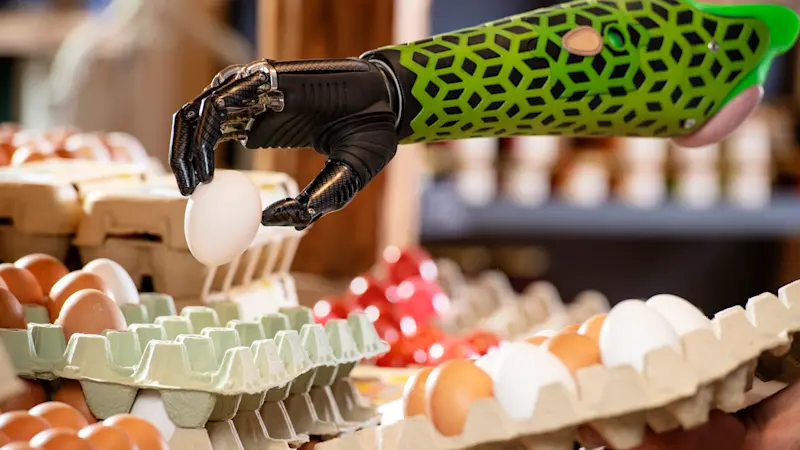
Artificial Intelligence allows prostheses to learn from the user
Pattern recognition enables movements in real time
Users can now intuitively control their prostheses in real-time thanks to the first Europe-wide prosthetic steering with pattern recognition: Myo Plus. It will be available on the market in March. “Following an amputation, the hand and its functioning are still mapped in the brain. Amputees can still imagine moving their hand. The signals are still sent as well, but the corresponding limb to carry out the command is missing”, explains Dr Thomas Fuchsberger from the Klinikum Traunstein. In cooperation with the University of Tübingen, the Klinikum Traunstein and Ottobock he treated first patients with the new prosthesis control during a clinical trial. The Myo Plus pattern recognition uses eight electrodes to measure the incoming signals on the forearm and recognises patterns that are characteristic for individual movements. Using complex algorithms, the device learns to classify signals and patterns so they can be translated into a prosthesis movement.
Movements similar to a healthy hand
Pattern recognition offers users of prosthetic hands with many different functionalities major advantages. Switching between grips and positions manually is no longer necessary. “Thanks to the new control system my prosthesis feels just like my healthy hand. I think of a movement with my phantom hand and the prosthesis implements it without me doing anything”, says farmer Wolfgang Bauer (24), who lost his right hand during a work accident at his parents’ farm three and a half years ago. “Today, my life is similar to the life I had prior to the accident. I work at the farm and at the office. For heavy tasks I use a robust hand or the electric Greifer. In my free time I prefer the bebionic hand.” The Myo Plus pattern recognition is compatible with all myoelectric Ottobock hands.
The user controls the prosthetic’s learning
After the initial fitting by an O&P professional, the patient can independently manage the prosthesis control device via an app. “By seeing the measured movement patterns in the app, I can practice to subconsciously access each precise pattern”, says Bauer. Most patients can learn how to use the new control device within a matter of days. The greatest challenge users face is the similarity between individual patterns. Due to the fact that many hand movements differ only by the slightest nuance, Myo Plus has to recognise and correctly assign a huge number of different patterns. As soon as communication between the user and the control device has been established, the user can save any progress via the app and thus make their own adjustments. Among other things users can determine the speed of the hand and its rotation.
About the bebionic hand prosthesis
Thanks to a selection of 14 grip patterns and hand positions, the multi-articulating hand is the perfect match for the day-to-day challenges of the digital world of work. Among other things, prosthesis users can extend their index finger to use the keyboard of a PC or laptop as well as the keypad on a phone. Individual motors in each finger allow the hand to move and grip in a natural, coordinated way. The motors are positioned so as to optimise weight distribution. This makes the hand lighter and more comfortable to wear. Thanks to the proportional speed control feature, the prosthesis user can even manage tasks requiring a high level of precision, such as holding an egg or polystyrene cup. In combination with the new Myo Plus prosthesis control with pattern recognition, users can fully exploit the potential of the bionic hand for the first time.
